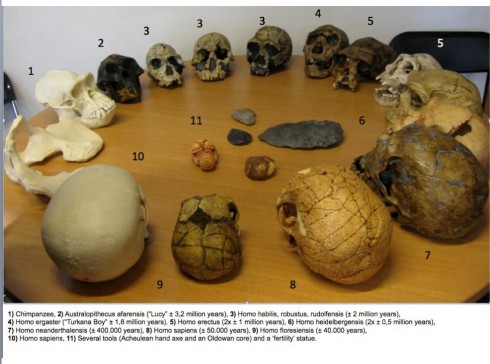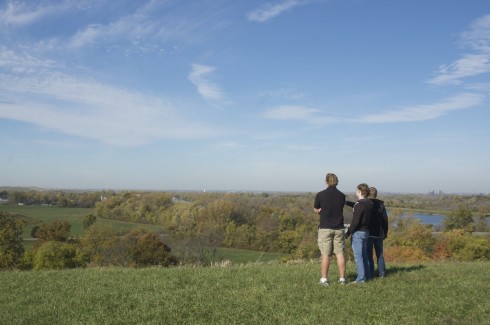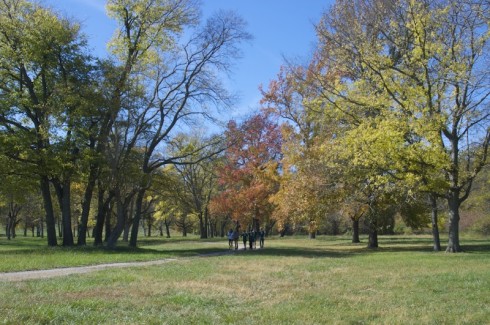The Smithsonian has an excellent, interactive, family tree for humanity that goes back 6 million years.
io9 has a neat image of key primate and homonid skulls that show the story of human evolution, and how we know about it.

Middle and High School … from a Montessori Point of View
The Smithsonian has an excellent, interactive, family tree for humanity that goes back 6 million years.
io9 has a neat image of key primate and homonid skulls that show the story of human evolution, and how we know about it.


Almost a thousand years ago, 20,000 people lived at a place called Cahokia. At the center of their city, was the largest artificial mound in North America. A large part of Cahokia’s success is surely its location: near the confluence of the Mississippi and Missouri Rivers — just across the Mississippi from modern-day St. Louis. Yet less than 400 years later (see timeline) the city was abandoned, and no one is quite sure what happened.
Our middle and high school took a trip out to Cahokia last month. It was during the same intercession between quarters when we visited the Laumeier Sculpture Park, the Da Vinci Exhibition, and did our brief biological survey of the campus.
The elevation of the main mound, sitting on the flat Mississippi flood plain, with the St. Louis skyline in the distance, was a great place to talk about the importance of physical geography in the location of cities (your biggest cities are always going to be on rivers, or the ocean or, often, both) and to reflect on how history repeats itself — a once thriving metropolis is nothing now but displaced piles of alluvium and mystery.
View Cahokia in a larger map
Cahokia is a World Heritage Site, and it has an excellent museum. I particularly liked the detail in their life-sized reconstruction of a section of the city.
Their website is also good. Apart from the timeline, mentioned above, they have a nice interactive map for details about each of the numerous mounds, and a long page about the archeology.
The site is pretty big, so you can spend a fair amount of time exploring. Fall, when the leaves have turned color, and the air has cooled a little, is an excellent time to visit.

Razib Kahn has a fascinating interview with Milford Wolpoff, one of the main scientists behind the research that argues that humans are not all part of a single family tree, descended from a single ancestor who moved out of Africa about 200,000 years ago.
This section focuses on the theory, and has a nice explanation of what mitochondrial DNA is (and why it’s important):
It gives an excellent perspective on how science works, and how scientists work (scientists are people too with all the problems that entails).
The entire thing is a bit dense, but it’s one of the better discussions I’ve seen describing the process of science in action, with little hints at all the challenges that arise from personality conflicts and competing theories.
NPR reports on the discovery of a 11,500 year old house in Alaska that probably belonged to some of the first people to migrate to the Americas over the Bearing Land Bridge during the last Ice Age. Just 500 years later the Land Bridge was submerged by rising sea levels.
It’s a good article to go to for our discussion of human migration patterns. It also has the added poignancy of the fact that, at the end, the home was turned into a burial crypt for a young member of the family.